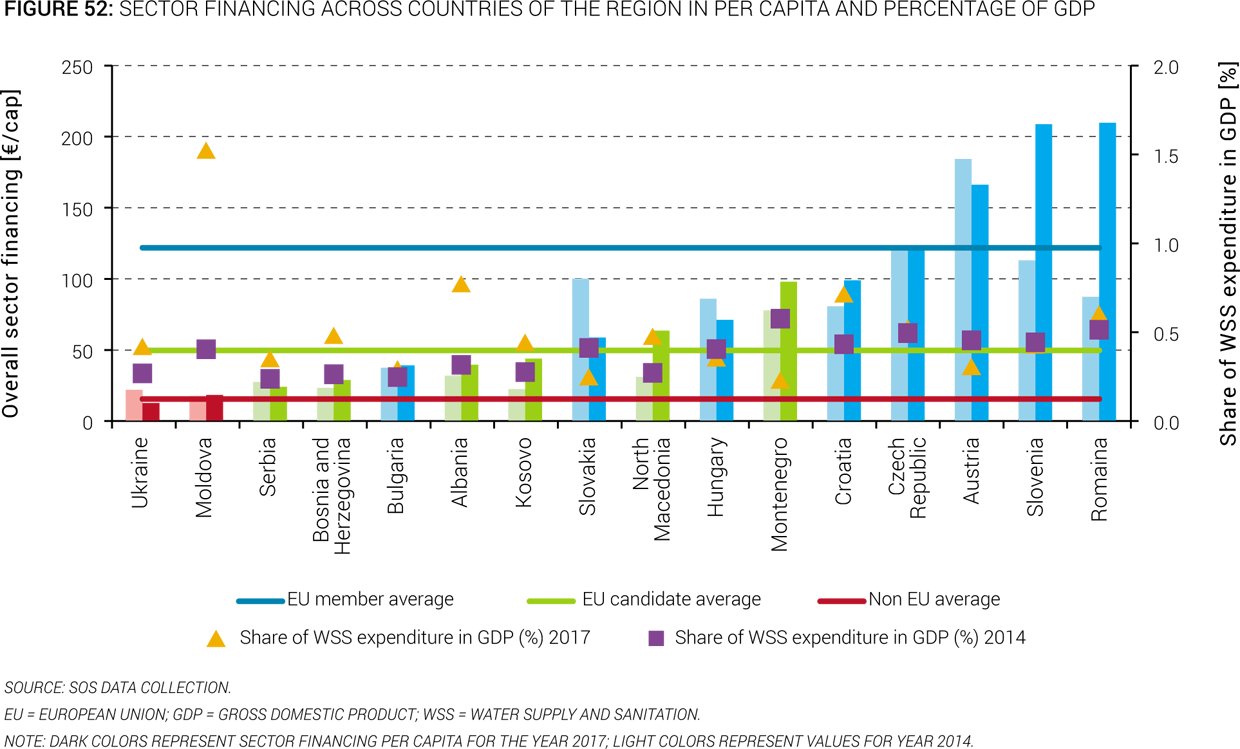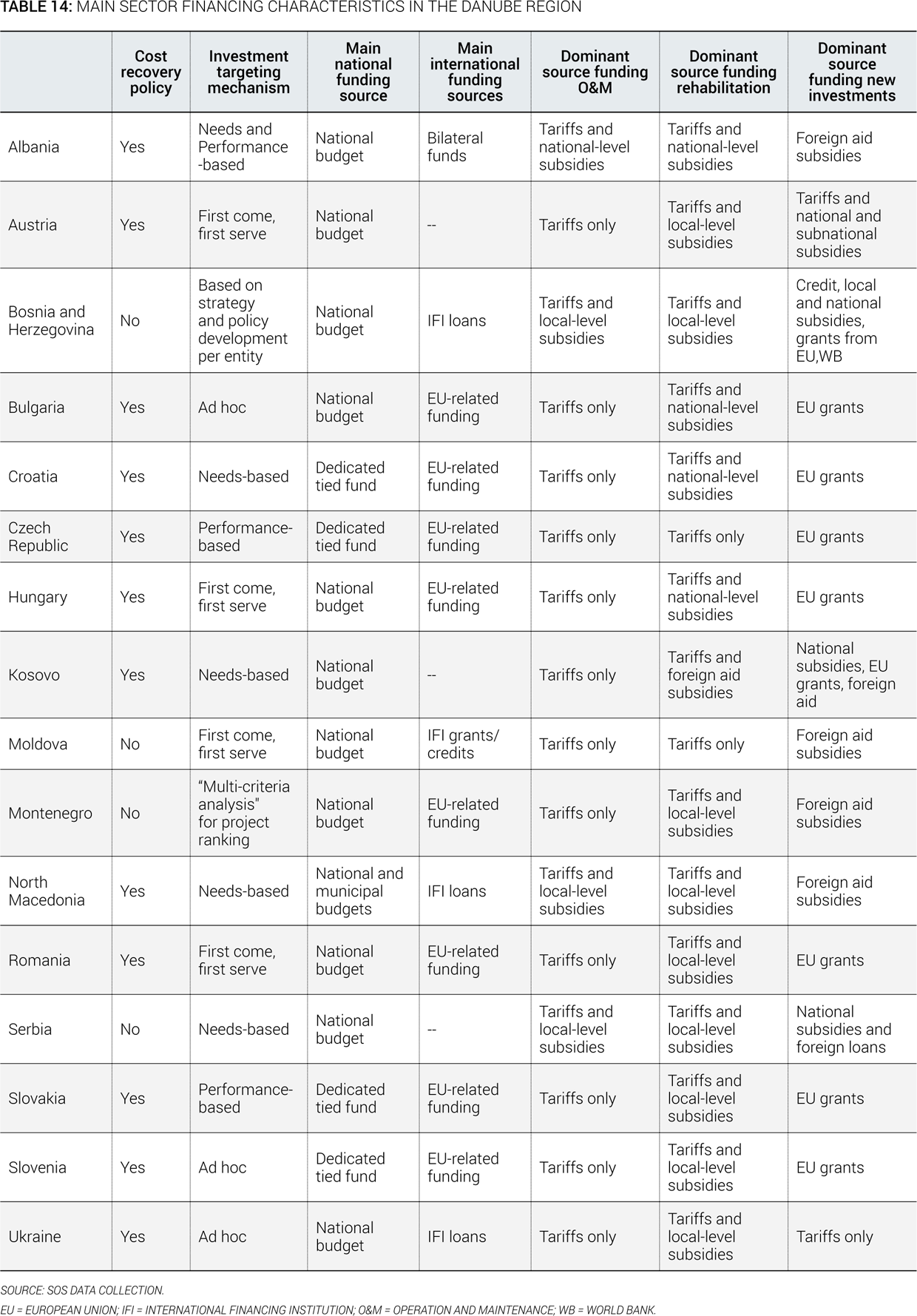A. Sources of Financing: Tariffs, Taxes, and Transfers
90. The level of sector financing and percentage of expenditure in WSS over GDP varies widely from country to country, with European Union (EU) members sprinting ahead both in terms of level of expenditure over GDP and sector financing per capita (Figure 52). Many of the candidate and non-EU countries remain in the lower range of the generally accepted value for overall sector expenditure as a share of gross domestic product for middle and low-income countries (0.54 to 2.60 percent and 0.70 percent to 6.30 percent of GDP respectively) (OECD 2006).

91. The share of tariffs in overall sector financing has increased above 75% in a few countries in the last three years, showing the gradual adoption of the cost recovery principle in the region (Figure 53). This evolution is mainly supported by a strong increase in water and wastewater tariffs in some countries such as Montenegro, Moldova, and Slovenia (see part C of the present chapter).

92. In all of the Danube countries (except Austria and Serbia, were sector financing comes almost entirely from tariffs), taxes and transfers are still financing investments. Not surprisingly, in most EU member countries and some candidate countries, EU-related funding (cohesion funds, regional policy funds, and Instrument for Pre-Accession [IPA] funds) represent the largest share of external financing to the sector, whereas in non-EU countries, International Financing Institution (IFI) and bilateral donors continue to play the main role. In addition, four countries (Croatia, Czech Republic, Slovakia, and Slovenia) have set up dedicated funds to finance the water sector investments, thus avoiding potential national budget appropriation and allowing securing predictable funding (Table 14). A great diversity of funds allocation methods can be observed across the region: five countries allocate investment funds on a needs basis, three on an ad-hoc basis, three on a first-come-first-serve basis, and three on a performance basis.

93. EU funds are especially being used for investments linked to Urban Waste Water Treatment Directive (UWWTD) implementation. An important proportion of the UWWTD investment costs have so far been covered by transfers from EU cohesion funds for new EU member states, which account for more than 40 percent of investment funding in some countries. Up until 2020, €15 billion has been allocated and transferred. In the current programming period (2014–2020), Bulgaria, Croatia, and Romania continue to receive substantial EU funding, as their wastewater infrastructure is still below UWWTD compliance requirements (Table 15). But the potential reduction of EU allocations for the next EU budget period (2021–2027) might jeopardize the overall funding of wastewater capital expenditure in the region just when investment will need to increase to ensure asset renewal. As a result, countries will have to turn to a combination of taxes and tariff increases to fund those investments, which could possibly present fiscal, political, and social challenges.


